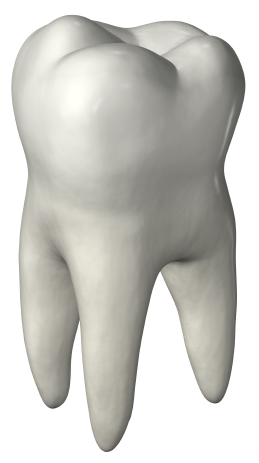Blood
 Wed, July 11, 2007 at 11:15 AM
Wed, July 11, 2007 at 11:15 AM  Ok, here’s the deal on your blood. As an average adult, you have about five liters of blood flowing through your veins. The entire volume is made up of four components; red blood cells, white blood cells, platelets, and plasma.
Ok, here’s the deal on your blood. As an average adult, you have about five liters of blood flowing through your veins. The entire volume is made up of four components; red blood cells, white blood cells, platelets, and plasma.
Red blood cells are red. They’re the little guys that do the heavy lifting by carrying oxygen around your body. They’re kind of like college students who are moonlinght as movers. Normally, these little guys are shaped kind of like a doughnut without the hole in the middle going all the way through. (More like a depression than a hole really.) However, these guys can change their shape in order to move through tiny capillaries. In addition delivering oxygen, red blood cells pick up carbon dioxide, a waste product of cellular respiration and the stuff you don’t want anymore. This is handy as it would be a waste of a trip if you had to have someone else come get this carbon dioxide and the red cells are right there anyway. When red cells are carrying oxygen they are bright red but deoxygenated blood (not carrying oxygen) is a really dark maroon color giving veins their ‘blue’ coloring.
Half your body’s red blood cells are replaced every seven days which is easy to understand when you realize that iIf all the blood vessels in your body were laid end to end, they would reach about 60,000 miles.
White blood cells are the gunslingers of the blood posse. They go around nuking, spraying, and slurping up all the little critters that you don’t want around like bacteria and viruses. The most common white blood cells are neutrophils and lymphocytes. Neutrophils are kind of like ‘the Blob’ and literally swallow their enemies alive through a process called phagocytosis (cell eating) which is really unpleasant if you’re the one getting absorbed. Lymphocytes are a lot smarter. They adapt their shape to destroy new viruses and bacteria that enter the body. While this time for previously unknown pathogens, your lymphocytes remember all their past encounters which prevents you from getting sick from the same illness in the future. (It’s good to know that every flu you catch is a different one. Vive le difference.)
Platelets are not very smart. They don’t have to be since their job is simply to find a breech in a vessel wall and throw themselves into it. They’re the ones who begin to form a clot when you cut your finger, kind of the Kamikaze of the blood system.
Red cells, white cells, and platelets are all formed in your bone marrow from the same stem cells.
Plasma is the fluid that carries all these cells around. It’s 90% water with a 10% smattering of proteins, electrolytes, glucose, vitamins, hormones, and cholesterol. (As far as I know there’s no salt and pepper.)
Addition Facts:
-
On average, men have 5.2 million red blood cells per cubic millimeter while women have 4.6 million.
-
Jewish dietary laws do not allow blood to be consumed in any way. Traditionally, salting and pickling purges blood from meat.
-
According to Chinese folklore, nosebleeds are a sign of sexual arousal in men
 Post a Comment | | posted in
Post a Comment | | posted in  Science
Science 


 is the influence of a treatment that has no medical value but seems to have a beneficial effect. (Kind of like apologizing to your wife for something you didn’t do.)
is the influence of a treatment that has no medical value but seems to have a beneficial effect. (Kind of like apologizing to your wife for something you didn’t do.)

